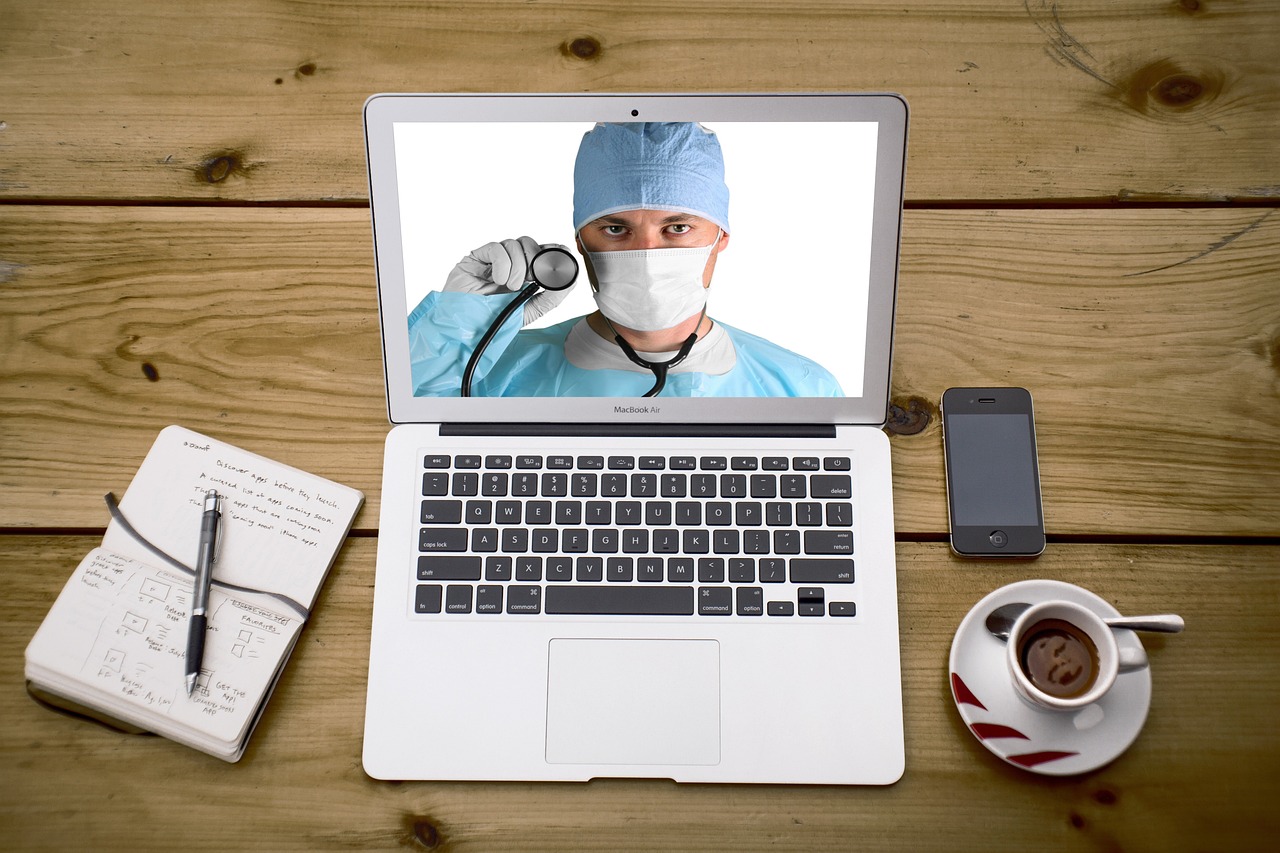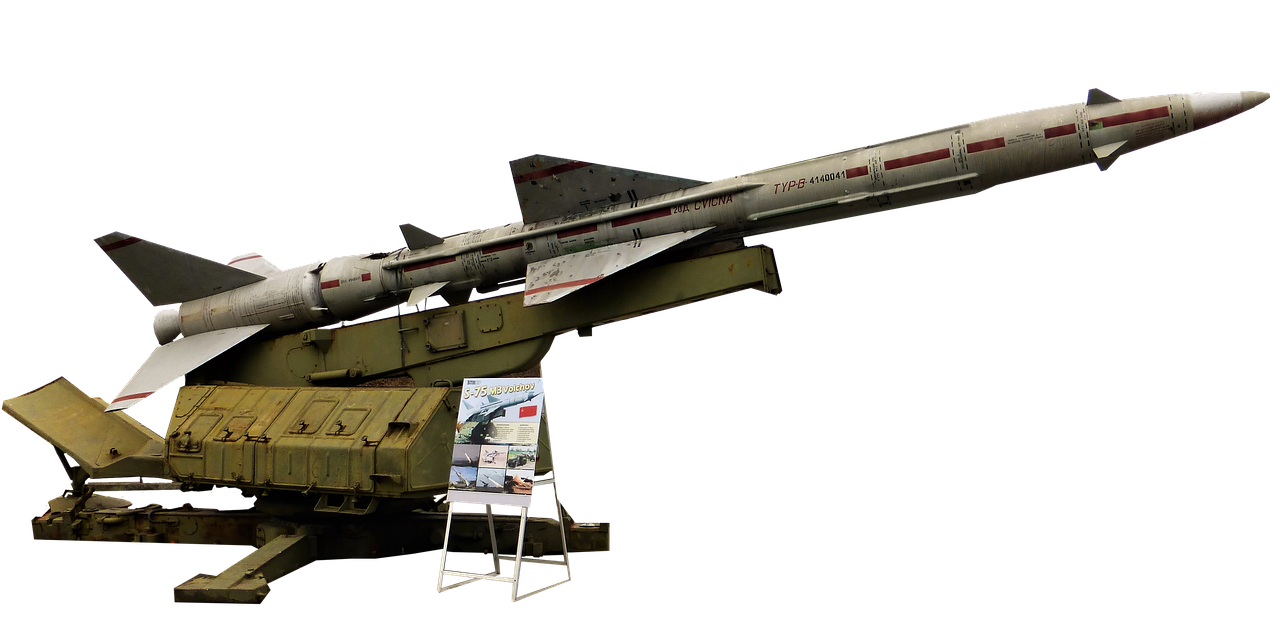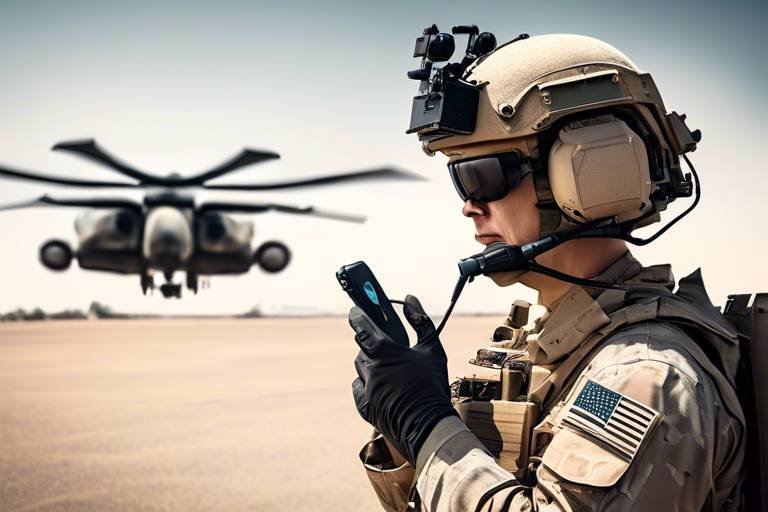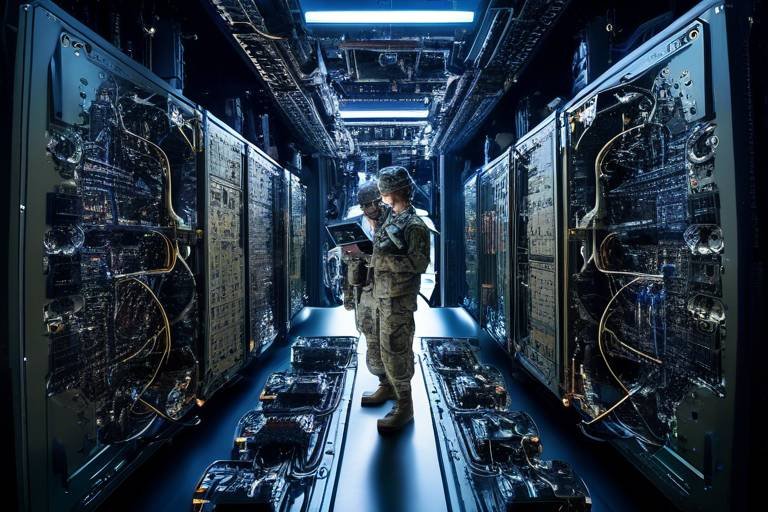Innovations in Military Medical Technologies for 2025
The landscape of military healthcare is undergoing a profound transformation, thanks to the rapid advancements in medical technologies anticipated by 2025. As the nature of warfare evolves, so too does the need for effective medical solutions that can keep pace with the challenges faced by armed forces. Imagine a battlefield where soldiers receive immediate medical attention, not just from medics on the ground, but through advanced technologies that connect them with medical professionals in real-time. This is not just a dream; it's a reality on the horizon.
In the coming years, innovations such as telemedicine, wearable health monitoring devices, and augmented reality are set to redefine how medical care is delivered in combat zones. These technologies promise to enhance battlefield care, ensuring that soldiers receive timely and effective treatment, which is crucial for saving lives and improving overall health outcomes. The integration of artificial intelligence and data analytics will further empower medical teams, allowing them to make informed decisions based on real-time data.
Moreover, the advancements in surgical techniques and the use of 3D printing for medical supplies will enable military surgeons to perform complex procedures with unparalleled precision. Field hospitals are also evolving, equipped with modular designs and state-of-the-art medical equipment to provide comprehensive care, even in the most challenging environments. As we look ahead to 2025, it's clear that the future of military medicine is bright, driven by innovation and a commitment to soldier health.
- What are the key innovations in military medical technology expected by 2025?
Key innovations include telemedicine, wearable health monitoring devices, augmented reality for training, advanced surgical techniques, and 3D printing for medical supplies.
- How will telemedicine impact battlefield care?
Telemedicine will allow for real-time consultations with medical professionals, improving response times and treatment efficacy for injured personnel.
- What role do wearable health monitoring devices play?
These devices will continuously track soldiers' health metrics, providing vital data for early intervention and enhancing overall mission readiness.
- What are the challenges associated with these technologies?
Data security and privacy are significant concerns, necessitating robust measures to protect sensitive health information from breaches.

Telemedicine in Combat Zones
Telemedicine is not just a buzzword; it's a game changer, especially in the high-stakes environment of combat zones. Imagine a soldier injured on the battlefield, miles away from a hospital, yet receiving expert medical advice in real-time. This is the reality that telemedicine brings to military healthcare. By leveraging advanced communication technologies, healthcare professionals can provide immediate consultations, diagnostics, and treatment plans without the need for physical presence. This capability drastically improves response times, which is crucial when every second counts in saving lives.
One of the most significant advantages of telemedicine is its ability to connect soldiers with medical experts who might be thousands of miles away. In traditional settings, a soldier requiring urgent care would have to rely on the skills of the nearest medic, who may not have the specialized knowledge needed for complex injuries. With telemedicine, a medic can consult with a trauma surgeon in real-time, ensuring that the soldier receives the most effective care possible. This not only enhances the quality of treatment but also boosts the confidence of the medical personnel on the ground.
Moreover, telemedicine facilitates continuous monitoring of a soldier's condition. For example, if a soldier is stabilized after an injury but requires ongoing assessment, telemedicine allows healthcare providers to monitor vital signs and other health metrics remotely. This capability can reduce the need for evacuation from the battlefield, which is often risky and logistically challenging. Instead of moving a patient through potentially hostile terrain, medical teams can provide care on-site, ensuring that soldiers remain in the fight longer and with better health outcomes.
However, implementing telemedicine in combat zones is not without its challenges. Connectivity issues can arise due to the remote locations and the unstable nature of battlefield environments. To combat this, military medical teams are exploring the use of satellite communications and mobile networks to ensure reliable connections. Additionally, the training of personnel to effectively use telemedicine tools is essential. Medics must be equipped not only with medical knowledge but also with the technical skills to operate these advanced systems.
In summary, telemedicine is revolutionizing military medical care by enhancing the speed and quality of treatment available to soldiers in combat zones. As technology continues to evolve, we can expect even more innovative solutions to emerge, further bridging the gap between frontline care and specialized medical expertise. The integration of telemedicine into military operations is a testament to the commitment to soldier health and well-being, ensuring that those who serve receive the best care possible, no matter where they are.
- What is telemedicine? Telemedicine refers to the use of telecommunications technology to provide medical care remotely, allowing healthcare professionals to diagnose and treat patients without being physically present.
- How does telemedicine benefit soldiers in combat zones? It allows for real-time consultations with medical experts, enhances the quality of care, and reduces the need for evacuation, thereby saving lives and improving health outcomes.
- What challenges does telemedicine face in combat? Connectivity issues and the need for proper training for medical personnel can hinder effective telemedicine implementation in combat zones.
- Will telemedicine be used in future military operations? Yes, as technology advances, telemedicine will likely play an increasingly important role in military healthcare, enhancing the capabilities of medical teams on the battlefield.

Wearable Health Monitoring Devices
In the ever-evolving landscape of military medicine, are emerging as game-changers. These cutting-edge technologies are not just fancy gadgets; they are essential tools that can significantly enhance the health and safety of soldiers on the battlefield. Imagine a scenario where a soldier can monitor their vital signs in real-time, receiving alerts about potential health issues before they become critical. This is not science fiction; this is the reality that wearable devices are bringing to military healthcare.
These devices are designed to track a variety of health metrics, including heart rate, body temperature, and oxygen saturation levels. The data collected is crucial for early intervention, allowing medical teams to address health concerns proactively. For instance, if a soldier's heart rate spikes unexpectedly, the device can send an alert to medics, prompting immediate action. This capability can be the difference between life and death in high-pressure situations.
Moreover, the integration of wearable technology with advanced analytics can provide insights into overall soldier health and readiness. By analyzing trends over time, military healthcare providers can identify patterns that may indicate underlying health issues. This predictive capability not only enhances individual soldier care but also contributes to the overall mission readiness of military units.
However, while the benefits are substantial, the implementation of wearable health monitoring devices is not without challenges. One of the primary concerns is ensuring the security of sensitive health data. As these devices collect and transmit personal health information, they become potential targets for cyber threats. Therefore, robust cybersecurity measures must be implemented to protect this data from breaches. This includes encryption, secure data storage, and strict access controls.
In conclusion, wearable health monitoring devices represent a significant advancement in military medical technologies. They offer the potential for improved soldier health outcomes and enhanced operational readiness. As we look towards 2025, it is clear that these devices will play a pivotal role in shaping the future of military healthcare.
- What types of health metrics can wearable devices monitor?
Wearable health monitoring devices can track various metrics, including heart rate, body temperature, blood pressure, and oxygen saturation levels. - How do these devices improve soldier safety?
By providing real-time health data, wearable devices enable early detection of potential health issues, allowing for timely medical intervention. - What are the data security concerns associated with wearable devices?
Since these devices collect sensitive health information, they are vulnerable to cyber threats, necessitating strong cybersecurity measures to protect the data. - Will wearable devices be used in civilian healthcare as well?
While primarily focused on military applications, many of these technologies are being adapted for civilian healthcare, enhancing overall health monitoring and management.

Remote Patient Monitoring Systems
In the fast-paced world of military operations, Remote Patient Monitoring Systems (RPMS) have emerged as a game-changer in ensuring the health and safety of soldiers on the battlefield. Imagine being able to monitor a soldier's vital signs and health metrics in real-time, all while they are miles away from a medical facility. This technology allows healthcare providers to keep a close watch on the well-being of troops, facilitating timely interventions that can be the difference between life and death.
RPMS leverage advanced sensors and mobile technology to collect critical health data, such as heart rate, blood pressure, and oxygen saturation. This data is transmitted to medical personnel who can analyze it instantly, making it possible to respond to emergencies swiftly. For instance, if a soldier experiences a sudden drop in blood pressure or irregular heart rhythms, medical teams can intervene before the situation worsens, potentially avoiding the need for evacuation.
One of the most remarkable aspects of RPMS is their ability to function in challenging environments. Whether in a desert, jungle, or urban warfare setting, these systems can operate effectively, ensuring that soldiers receive optimal care regardless of their location. The integration of satellite communication and mobile networks means that even in remote areas where traditional communication might fail, medical personnel can stay connected with their patients.
Furthermore, the data collected through RPMS can be invaluable for long-term health assessments. By continuously monitoring soldiers, healthcare providers can identify trends and patterns that may indicate underlying health issues. This proactive approach not only enhances immediate care but also contributes to the overall health management of military personnel.
However, the implementation of Remote Patient Monitoring Systems is not without its challenges. Issues such as data security and privacy must be addressed to protect sensitive health information from potential breaches. As the military increasingly relies on technology, ensuring that robust cybersecurity measures are in place becomes paramount.
In summary, Remote Patient Monitoring Systems are revolutionizing how healthcare is delivered in the military. By enabling real-time health monitoring and facilitating timely interventions, these systems are enhancing soldier safety and improving overall health outcomes. As we move towards 2025, the integration of such technologies will undoubtedly play a crucial role in shaping the future of military medicine.
- What are Remote Patient Monitoring Systems?
They are advanced technologies that allow healthcare providers to monitor patients' vital signs and health metrics in real-time, even from a distance. - How do RPMS work in combat zones?
RPMS use sensors to collect health data, which is transmitted to medical personnel for analysis and timely intervention. - What are the benefits of using RPMS for soldiers?
They enable immediate medical responses, improve long-term health assessments, and enhance overall soldier safety. - Are there any challenges associated with RPMS?
Yes, issues such as data security and privacy are significant concerns that need to be addressed to protect sensitive health information.

Integration with AI Analytics
The integration of AI analytics into military medical technologies is not just a trend; it’s a game-changer that is reshaping the landscape of healthcare for armed forces. Imagine a world where medical teams can predict health issues before they even occur. This is becoming a reality thanks to advanced algorithms that analyze vast amounts of data collected from various sources, including wearable health devices and electronic health records. With AI at the helm, medical professionals can receive real-time insights that enhance their decision-making processes, ultimately leading to better patient outcomes.
One of the key benefits of AI analytics is its ability to process data at lightning speed. In high-pressure environments like combat zones, every second counts. AI systems can identify patterns and anomalies in a soldier’s health metrics, flagging potential issues such as dehydration, fatigue, or even the onset of more severe conditions like heat stroke. This level of predictive analysis allows healthcare providers to intervene proactively rather than reactively, significantly improving the chances of a successful recovery.
To illustrate this, consider the following table that showcases how AI analytics can transform different aspects of military healthcare:
| Aspect | Traditional Methods | With AI Analytics |
|---|---|---|
| Data Processing | Manual analysis, slower response times | Real-time processing, immediate alerts |
| Predictive Insights | Limited forecasting capabilities | Advanced predictive modeling for proactive care |
| Resource Allocation | Reactive resource management | Optimized resource allocation based on predictive data |
Moreover, the integration of AI analytics also facilitates better resource management. By analyzing health trends and outcomes, military healthcare systems can allocate resources more effectively, ensuring that medical personnel are prepared for potential surges in patient care needs. This is particularly important in combat situations where the unpredictability of injuries and illnesses can strain available medical resources.
However, it’s crucial to acknowledge that the implementation of AI analytics is not without challenges. One significant concern is the security of sensitive health data. As military healthcare systems increasingly rely on digital solutions, the risk of data breaches grows. Therefore, robust cybersecurity measures must be in place to protect the privacy of soldiers while still allowing for the efficient use of AI technologies.
In conclusion, the integration of AI analytics into military medical technologies is paving the way for a new era in healthcare. By enabling predictive insights, improving resource allocation, and enhancing decision-making processes, AI is not just a tool but a vital partner in ensuring the health and safety of soldiers on the battlefield. As we look toward 2025 and beyond, the potential for AI to revolutionize military medicine is not just promising; it’s imperative.
- What is AI analytics in military healthcare? AI analytics refers to the use of artificial intelligence to analyze health data quickly and accurately, enabling predictive insights and proactive care for soldiers.
- How does AI improve decision-making in combat zones? By processing vast amounts of health data in real-time, AI provides medical teams with immediate insights, allowing them to make informed decisions swiftly.
- What are the data privacy concerns related to AI in military medicine? The use of AI involves handling sensitive health information, raising concerns about potential data breaches and the need for robust cybersecurity measures.
- Can AI predict health issues before they arise? Yes, AI analytics can identify patterns in health metrics that may indicate potential issues, allowing for timely interventions.

Data Security Challenges
This article explores the latest advancements in military medical technologies expected to shape healthcare for armed forces by 2025, enhancing battlefield care and overall soldier health outcomes.
Telemedicine is revolutionizing how medical care is delivered in combat situations, allowing real-time consultations and diagnostics, thereby improving response times and treatment efficacy for injured personnel.
Wearable technology is set to play a crucial role in monitoring soldiers' health metrics, providing vital data for early intervention and enhancing overall mission readiness on the battlefield.
Remote monitoring systems enable healthcare providers to track soldiers' health from afar, ensuring timely interventions and reducing the need for evacuation in critical situations.
AI-driven analytics enhance the effectiveness of remote monitoring by providing predictive insights, allowing medical teams to anticipate health issues before they escalate.
As military medical technologies advance, data security becomes a paramount concern. The implementation of wearable devices and telemedicine solutions generates vast amounts of sensitive health data. This data, while crucial for improving soldier care, can also be a tempting target for cybercriminals and hostile entities. Ensuring the integrity and confidentiality of this information is not just a technical challenge; it’s a matter of national security.
One of the significant challenges is the potential for data breaches, which can expose personal health information (PHI) of soldiers. Such breaches could lead to misuse of data, impacting not only individual privacy but also the operational effectiveness of military units. The consequences of a breach could be dire, ranging from compromised missions to the potential for blackmail of service members.
To combat these threats, military organizations must adopt a multi-layered approach to cybersecurity, including:
- Encryption: Encrypting data both in transit and at rest to prevent unauthorized access.
- Access Controls: Implementing strict access controls to ensure that only authorized personnel can view sensitive information.
- Regular Audits: Conducting regular audits and assessments of security protocols to identify and rectify vulnerabilities.
- Training and Awareness: Providing ongoing training for personnel on best practices for data security and recognizing potential threats.
Furthermore, the integration of advanced technologies, such as blockchain, may offer promising solutions to enhance data security. By utilizing decentralized ledgers, military medical systems can ensure that data integrity is maintained and that any alterations are easily traceable.
Ultimately, as we look toward 2025, addressing these data security challenges will be essential for the successful implementation of innovative military medical technologies. The balance between leveraging cutting-edge advancements and safeguarding sensitive information will determine the future of healthcare for armed forces.
Augmented reality (AR) is transforming medical training for military personnel, offering immersive simulations that improve skills and preparedness for real-life medical emergencies on the battlefield.
Innovative surgical technologies, including robotic-assisted procedures, are enhancing the capabilities of military surgeons, enabling complex operations to be performed with greater precision and reduced recovery times.
3D printing technology is revolutionizing the production of medical supplies, allowing for rapid creation of necessary equipment and prosthetics directly in the field, thus improving patient outcomes.
The design and technology of field hospitals are evolving, incorporating modular setups and advanced medical equipment to provide comprehensive care in remote or hostile environments.
- What are the main benefits of telemedicine in military settings?
Telemedicine allows for quick access to medical expertise, reduces evacuation needs, and improves treatment outcomes through real-time diagnostics.
- How do wearable health monitoring devices assist soldiers?
These devices continuously track vital signs and health metrics, providing critical information that can lead to timely medical interventions.
- What role does AI play in military healthcare?
AI enhances data analysis and predictive capabilities, allowing healthcare providers to foresee potential health issues and respond proactively.
- What are the risks associated with data security in military medical technologies?
Risks include data breaches, unauthorized access to sensitive health information, and potential misuse of personal data.

Augmented Reality in Medical Training
Augmented Reality (AR) is rapidly becoming a game-changer in the field of military medical training. Imagine a world where medical personnel can practice life-saving procedures in a safe, controlled environment that closely mimics real battlefield scenarios. This technology allows for immersive simulations that not only enhance learning but also boost confidence among soldiers who may find themselves in high-pressure situations. With AR, trainees can visualize complex anatomical structures and practice surgical techniques without the risks associated with live patients.
One of the key benefits of AR in medical training is its ability to provide instant feedback. As trainees engage with virtual patients, they receive real-time evaluations of their performance, highlighting areas for improvement. This immediate response is crucial because, in a battlefield environment, every second counts. The more prepared a soldier is, the better the outcomes for injured personnel. For instance, a soldier practicing a critical procedure in AR can refine their skills until they achieve a level of proficiency that translates seamlessly into real-life situations.
Moreover, AR fosters collaboration among medical teams. Trainees can work together in a shared virtual space, discussing strategies and learning from one another's experiences. This cooperative approach not only enhances individual skills but also strengthens team dynamics, which is vital in a military setting where teamwork can mean the difference between life and death. Consider it akin to a sports team practicing plays together; the more they rehearse, the more synchronized their efforts become during an actual game.
To further illustrate the impact of AR on medical training, let's take a look at some of the specific applications:
- Virtual Anatomy Lessons: Trainees can explore 3D models of the human body, gaining a deeper understanding of anatomy and physiology.
- Simulated Emergency Scenarios: AR can replicate various medical emergencies, allowing trainees to practice their responses in a risk-free environment.
- Remote Guidance: Experienced medical professionals can guide trainees through procedures from afar, enhancing learning opportunities.
As we look towards the future, the integration of AR in military medical training is expected to expand even further. The technology will likely evolve to include machine learning algorithms that adapt simulations based on individual trainee performance, creating a personalized learning experience. This tailored approach ensures that each soldier receives the training they need to excel in their specific roles.
In conclusion, the adoption of Augmented Reality in military medical training is not just an enhancement; it is a transformation. By bridging the gap between theory and practice, AR equips soldiers with the skills and confidence necessary to face the challenges of the battlefield. As we advance towards 2025, it is clear that this innovative technology will play a pivotal role in shaping the future of military healthcare.
- What is Augmented Reality in medical training? Augmented Reality (AR) in medical training refers to the use of technology that overlays digital information onto the real world, allowing trainees to engage in immersive simulations that enhance their learning experience.
- How does AR improve medical training for military personnel? AR improves medical training by providing a safe environment for practice, offering instant feedback, and facilitating collaborative learning among trainees, which ultimately leads to better preparedness in real-life situations.
- What are some applications of AR in military medical training? Applications include virtual anatomy lessons, simulated emergency scenarios, and remote guidance from experienced medical professionals.

Advanced Surgical Techniques
In the ever-evolving landscape of military medicine, are at the forefront of enhancing the capabilities of military surgeons. As we gear up for 2025, innovations such as robotic-assisted surgeries and minimally invasive procedures are not just buzzwords; they are becoming the norm in combat zones. Imagine a scenario where a soldier is injured on the battlefield, and instead of being transported to a distant hospital, they receive immediate and sophisticated surgical care right where they are. This is not science fiction; it’s the new reality.
Robotic-assisted surgical systems are revolutionizing how operations are performed in high-pressure environments. These systems allow surgeons to conduct complex procedures with unparalleled precision, minimizing damage to surrounding tissues and significantly reducing recovery times. The ability to perform surgeries remotely, aided by robotic technology, means that even the most skilled surgeons can lend their expertise from afar, ensuring that every soldier receives the best possible care, no matter where they are deployed.
Moreover, the integration of augmented reality (AR) into surgical procedures is enhancing the training and performance of military medical personnel. Surgeons can now visualize critical anatomy in real-time during operations, which helps them navigate complex procedures with greater accuracy. This technology not only improves surgical outcomes but also boosts the confidence of the medical team, knowing they have cutting-edge tools at their disposal.
Another significant advancement is the use of 3D printing technology for creating surgical instruments and implants tailored to the specific needs of patients. This capability allows for the rapid production of medical supplies directly in the field, which can be a game-changer in emergency situations. For instance, if a soldier requires a prosthetic limb after an injury, 3D printing can produce a custom-fit prosthetic on-site, drastically improving recovery times and patient satisfaction.
However, with these advancements come challenges. The complexity of new technologies necessitates ongoing training and adaptation for military medical personnel. As they embrace these sophisticated tools, they must also stay updated on best practices and protocols to ensure the highest standards of care are maintained. Furthermore, the rapid pace of technological change raises questions about data security and the protection of sensitive patient information, which must be addressed to prevent breaches and maintain trust.
As we look towards 2025, it’s clear that the field of military medicine is on the brink of a transformation. The combination of advanced surgical techniques, innovative technology, and a commitment to continuous improvement will undoubtedly enhance the health outcomes of our armed forces. The future is bright, and with these innovations, we can ensure that our soldiers receive the best care possible, no matter the circumstances.
- What are robotic-assisted surgeries?
Robotic-assisted surgeries involve the use of robotic systems to aid surgeons in performing complex procedures with enhanced precision and control. - How does 3D printing benefit military medicine?
3D printing allows for the rapid production of medical supplies and implants customized to the needs of individual patients, improving care and recovery times. - What role does augmented reality play in surgical training?
Augmented reality provides immersive simulations that enhance the training of military surgeons, allowing them to practice and improve their skills in a controlled environment. - Are there data security concerns with advanced medical technologies?
Yes, as military medical technologies evolve, ensuring the security and privacy of sensitive health information is crucial to prevent data breaches.

3D Printing for Medical Supplies
In the rapidly evolving landscape of military medicine, 3D printing technology stands out as a game-changer, particularly when it comes to producing medical supplies. Imagine a battlefield where soldiers can have immediate access to the medical tools they need, crafted right on-site. This isn't just a dream; it's becoming a reality. With 3D printing, medical professionals can create everything from surgical instruments to prosthetics in a matter of hours, drastically reducing the time it takes to procure essential supplies. This capability is particularly critical in remote or hostile environments where traditional supply chains can be disrupted.
One of the most significant advantages of 3D printing is its ability to customize medical supplies to meet the specific needs of individual soldiers. For instance, if a soldier requires a unique prosthetic limb due to an injury, 3D printing allows for rapid prototyping and production tailored to their exact measurements. This level of customization not only enhances the comfort and functionality of the prosthetic but also speeds up the rehabilitation process, allowing soldiers to return to duty more quickly.
Furthermore, the efficiency of 3D printing contributes to cost savings for military healthcare systems. Traditional manufacturing processes often involve lengthy lead times and significant costs, especially when dealing with specialized equipment. In contrast, 3D printing can produce items on-demand, eliminating the need for large inventories and reducing waste. This not only conserves resources but also ensures that the latest technologies and designs can be implemented without the delays typically associated with conventional manufacturing.
However, the adoption of 3D printing in military medicine isn't without its challenges. Quality control is paramount, as the safety and effectiveness of medical supplies are non-negotiable. Military medical teams must ensure that the materials used in 3D printing are biocompatible and meet rigorous standards. Additionally, there is a need for training personnel on how to operate 3D printers effectively and understand the complexities of designing medical supplies.
To illustrate the impact of 3D printing in military healthcare, consider the following table that outlines some of the key applications:
| Application | Description | Benefits |
|---|---|---|
| Surgical Instruments | Creation of tools needed for surgeries on-site. | Reduces wait times and improves surgical outcomes. |
| Prosthetics | Custom-designed limbs tailored to individual needs. | Enhances comfort and accelerates recovery. |
| Medical Models | 3D printed anatomical models for training. | Improves training effectiveness for medical personnel. |
As we look toward the future, the integration of 3D printing technology in military medicine promises to enhance the agility and responsiveness of healthcare delivery on the battlefield. The ability to produce medical supplies on-demand not only improves the immediate care of injured personnel but also fosters a culture of innovation within military medical practices. It’s a thrilling era for military healthcare, where technology meets necessity, ensuring that our armed forces receive the best possible care when they need it most.
- What types of medical supplies can be 3D printed?
3D printing can create a variety of medical supplies, including surgical instruments, prosthetics, and anatomical models for training. - How does 3D printing improve medical care on the battlefield?
It allows for rapid production of customized medical supplies, reducing wait times and improving patient outcomes in critical situations. - Are there any risks associated with 3D printed medical supplies?
Yes, quality control is essential to ensure that materials are safe and effective for medical use, which requires rigorous standards and training. - Can 3D printing reduce costs in military healthcare?
Absolutely! By producing supplies on-demand, 3D printing can minimize waste and eliminate the need for extensive inventories, resulting in cost savings.

Field Hospital Innovations
This article explores the latest advancements in military medical technologies expected to shape healthcare for armed forces by 2025, enhancing battlefield care and overall soldier health outcomes.
Telemedicine is revolutionizing how medical care is delivered in combat situations, allowing real-time consultations and diagnostics, thereby improving response times and treatment efficacy for injured personnel.
Wearable technology is set to play a crucial role in monitoring soldiers' health metrics, providing vital data for early intervention and enhancing overall mission readiness on the battlefield.
Remote monitoring systems enable healthcare providers to track soldiers' health from afar, ensuring timely interventions and reducing the need for evacuation in critical situations.
AI-driven analytics enhance the effectiveness of remote monitoring by providing predictive insights, allowing medical teams to anticipate health issues before they escalate.
The implementation of wearable devices raises concerns about data security and privacy, necessitating robust measures to protect sensitive health information from potential breaches.
Augmented reality (AR) is transforming medical training for military personnel, offering immersive simulations that improve skills and preparedness for real-life medical emergencies on the battlefield.
Innovative surgical technologies, including robotic-assisted procedures, are enhancing the capabilities of military surgeons, enabling complex operations to be performed with greater precision and reduced recovery times.
3D printing technology is revolutionizing the production of medical supplies, allowing for rapid creation of necessary equipment and prosthetics directly in the field, thus improving patient outcomes.
The design and technology of field hospitals are evolving, incorporating modular setups and advanced medical equipment to provide comprehensive care in remote or hostile environments. These innovations are not just about aesthetics; they are about efficiency and effectiveness. For example, modern field hospitals now utilize portable diagnostic tools that allow medical personnel to conduct a variety of tests on-site, reducing the time it takes to diagnose and treat injuries. Additionally, the incorporation of telehealth capabilities ensures that specialists can provide guidance from afar, enhancing the level of care that can be delivered in the field.
One of the most exciting developments is the modular design of these hospitals. This allows for quick assembly and disassembly, making it easier to set up in various environments. Imagine a hospital that can be erected in less than a day, tailored to the specific needs of the situation. This flexibility is crucial, especially in combat zones where conditions can change rapidly. Moreover, these modular units can be equipped with state-of-the-art technology, such as robotic surgical systems and advanced imaging equipment, which significantly improve surgical outcomes.
Furthermore, the integration of renewable energy sources into field hospitals ensures that they can operate independently, even in the most remote locations. Solar panels and wind turbines are becoming commonplace, allowing for a sustainable approach to healthcare delivery in the field. This not only reduces logistical burdens but also enhances the resilience of military operations.
In summary, the innovations in field hospitals are paving the way for improved medical care in military operations. By focusing on modularity, technology integration, and sustainability, these advancements are set to redefine how care is delivered in the most challenging environments.
- What are the main innovations in field hospitals?
Innovations include modular designs, portable diagnostic tools, telehealth capabilities, and renewable energy sources.
- How do these innovations improve soldier care?
They enhance efficiency, reduce treatment times, and provide high-quality care in remote locations.
- What role does technology play in modern field hospitals?
Technology, such as robotic surgical systems and advanced imaging, significantly improves surgical outcomes and patient care.
Frequently Asked Questions
- What is telemedicine and how is it used in combat zones?
Telemedicine is a game-changer in military healthcare, enabling real-time consultations and diagnostics from remote locations. In combat zones, it allows medics and doctors to communicate instantly, providing immediate care to injured personnel without the need for physical presence. This not only speeds up response times but also significantly improves treatment outcomes.
- How do wearable health monitoring devices benefit soldiers?
Wearable health monitoring devices are like having a personal health assistant strapped to your wrist. They continuously track vital signs and health metrics, providing crucial data that can alert medical teams to potential issues before they become critical. This proactive approach ensures that soldiers are fit for duty and can respond effectively in high-stakes situations.
- What are remote patient monitoring systems?
Remote patient monitoring systems allow healthcare providers to keep an eye on soldiers' health from a distance. By using connected devices, medical teams can monitor conditions in real-time, which means they can intervene right when it's needed most, reducing the need for evacuations and ensuring that soldiers receive timely care.
- How does AI enhance remote monitoring in military medicine?
AI-driven analytics act like a crystal ball for medical teams, providing predictive insights based on the data collected from wearable devices. This means that potential health issues can be anticipated and addressed before they escalate, allowing for more effective and timely interventions.
- What are the data security challenges associated with military medical technologies?
With great technology comes great responsibility! The use of wearable devices and telemedicine raises significant concerns about data security and privacy. Protecting sensitive health information from breaches is critical, necessitating robust security measures to ensure that soldiers' health data remains confidential and secure.
- How is augmented reality changing medical training for military personnel?
Augmented reality (AR) is like a superhero for medical training! It offers immersive simulations that allow military personnel to practice their skills in a controlled environment. This hands-on experience prepares them for real-life medical emergencies, enhancing their readiness and confidence when it matters most.
- What are advanced surgical techniques being used in military medicine?
Advanced surgical techniques, such as robotic-assisted procedures, are taking military surgeries to a whole new level. These technologies enable surgeons to perform complex operations with incredible precision, significantly reducing recovery times and improving patient outcomes on the battlefield.
- How is 3D printing being utilized in military medical supplies?
3D printing is revolutionizing the way medical supplies are produced in the field. Imagine being able to create essential equipment and even prosthetics right on-site! This technology allows for rapid production, ensuring that soldiers receive the necessary care without delay, ultimately improving their chances of recovery.
- What innovations are being made in field hospital design?
Field hospitals are evolving significantly, incorporating modular setups and advanced medical equipment to provide comprehensive care in remote or hostile environments. These innovations ensure that soldiers have access to the best possible medical care, no matter where they are deployed.



















